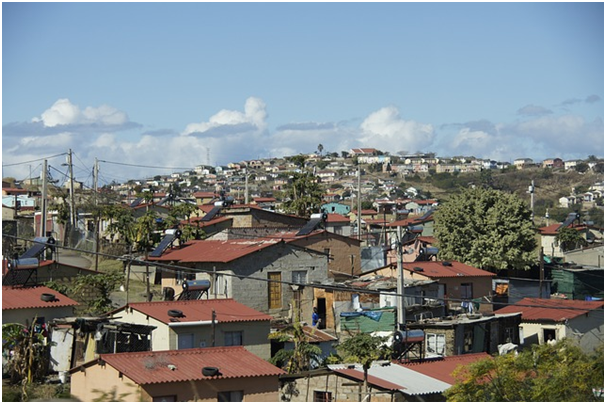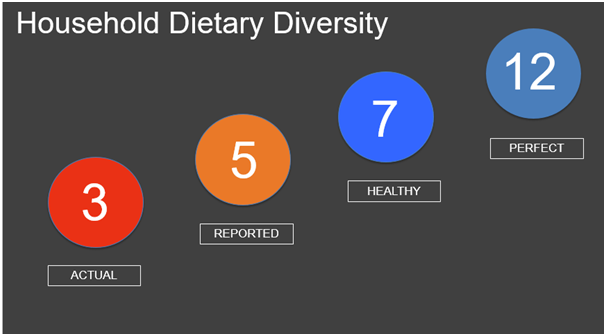
From left to right: Sakina Ahmadi, Selamawit Zinabou, Kieran Bauman, Jessica Chan, Ellen Wang and Daniella Ferlaino (photo)
Professor Bruce Frayne, Director of the International Development Program at the University of Waterloo, discussed urban development in the global south. The world’s population is rapidly growing and for the first time in history, over 50% of the world is living in urban centers. Renowned statistician Dr. Hans Rosling’s PIN code of the world estimates the population of America, Europe, Africa, and Asia by the billions. He states that “The PIN code of the World is ‘1114’: 1 billion people in the Americas, 1 billion in Europe, 1 billion in Africa, and 4 billion in Asia.” In 2100, the projected PIN code is 1145, meaning that the African population will have quadrupled in less than a hundred years. This population increase will intensify issues of food security and slums in the urban centers of the affected countries.
Jonathan Crush, founder of AFSUN (Africa Food Security Urban Network) reiterates,
“by mid-century, more than 60 per cent of the population of the Global South will be living in towns and cities, and the drivers of this urban revolution are poorly understood, as are its implications for poverty, food security, urban and rural livelihoods and inclusive growth.”
Rapid urban expansion can have detrimental effects, especially if there is not sufficient infrastructure to support the population growth. Migrants to these urban centres often end up living in illegally constructed slums.

A city in South Africa filled with slum housing
We were surprised even as International Development students when we discovered what slum communities prioritized. Professor Frayne told us about a study that was done by the School of Architecture and Planning in the University of Cape Town. It revealed that slum communities valued accessible education for their children, access to health care, and to employment the most. Shelter was the last priority on their list, although we had previously thought that shelter would be the most pressing need for people living in slums. This suggests that activist groups advocating for improved living conditions in slums may not accurately represent the residents’ priorities. Government relocation of residents to better housing in the outskirts of cities also presents challenges as people can no longer sustain their livelihoods. Pre-existing small business networks are destroyed, communities torn apart, and transportation infrastructure to their jobs in the city center do not reach their relocated homes. When we consider trying to improve the situation of people living in slums, we need to consider that housing is only part of the problem.
As briefly mentioned above another urban development issue is food insecurity. Food insecurity is the lack of sufficient nutrients received from foods, and chronic malnutrition is a major problem in developing countries as a result. Therefore, as populations in cities rise and the need for food security becomes even more of an issue, it is critical that urban centres prioritize the accessibility of nutritious food for the entire population.
Professor Frayne (PDF) presented a case study highlighting food insecurity in several cities in southern Africa. African cities do not necessarily suffer from a food shortage, as they have enough food to feed their populations. The food insecurity stems from a financial inability to purchase nutritious food and a lack of dietary variety in people’s diet. Once tea and sugar were removed from their diet, many slum residents in southern Africa only had three food groups in their diet, a far cry from the seven needed to be in good nutritional standing. There are about twelve different types of food groups for the Household Dietary Diversity Score (PDF).

A variety of food groups is important for good dietary health. Most southern African cities only meet 3 of the 12 food groups.
There are many opinions on what should be done about the issue of growing slums and food insecurity, but we believe that the most important step is government involvement. Governments need to take more action in ensuring the wellbeing of all citizens instead of pawning this responsibility over to human rights groups. Welfare systems need to be implemented, to give these people a way to support themselves so that they can get back on their feet and move out of the slums on their own. Most importantly, residents need to be asked what help they need and the answers incorporated into the plan. We need to recognize that each country, each city and each community is unique. There is no simple, universal solution to urban development issues but action must be taken now to secure a sustainable future for all.
References
Goodrum, A. (2014, October 1). Research project receives $2.5 million in funding. Balsillie School of International Affairs. Retrieved from https://www.balsillieschool.ca/news/research-project-receives-25-million-funding
Lack, M. (2013, November 10). Don't panic about population (energy is the problem). Retrieved from https://lackofenvironment.wordpress.com/2013/11/10/dont-panic-about-population-energy-is-the-problem/
Rosling, H. (2012, November 20). The PIN code of the World is 1114. 1 billion people in the Americas, 1 billion in Europe, 1 billion in Africa and 4 billion in Asia. [Twitter Post] Retrieved from https://twitter.com/hansrosling/status/270834658630062080
Swindale, A., & Bilinsky, P. (2006). Household dietary diversity score (HDDS) for measurement of food access: Indicator guide. Food And Nutrition Technical Assistance (FANTA). Retrieved from https://www.fantaproject.org/sites/default/files/resources/HDDS_v2_Sep06_0.pdf
Photo credits:
- Open source photo of South African slums retrieved from https://pixabay.com/en/slum-huts-poverty-south-africa-509410/.
- Frayne, B. (2016). Food security in southern African cities. [PowerPoint slides].